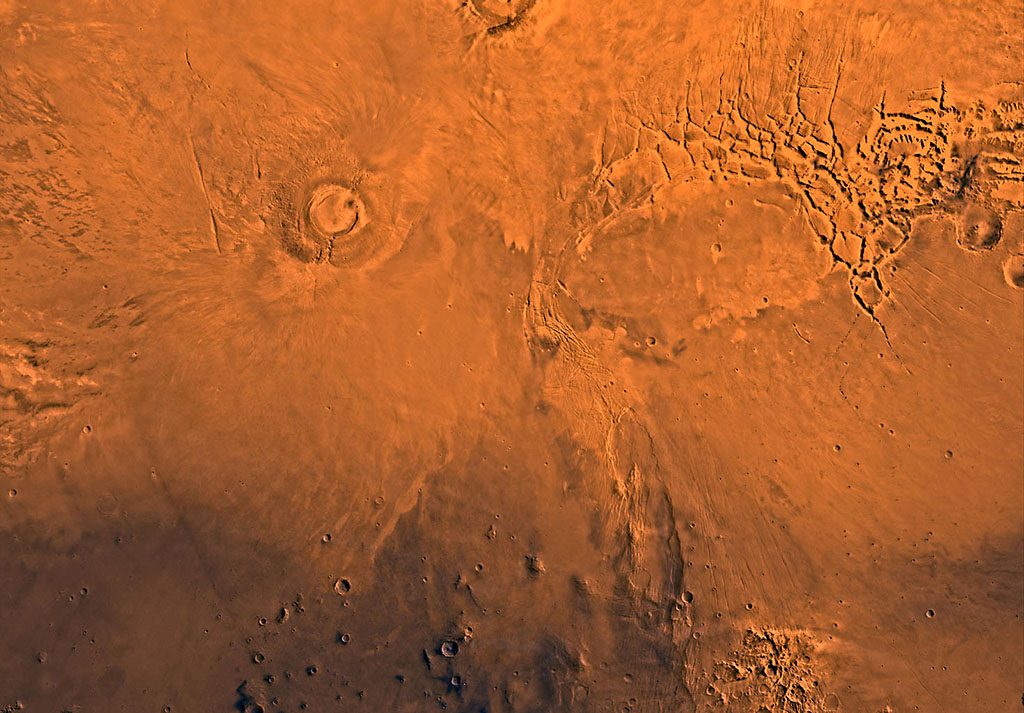New research using observations from NASA’s Mars Reconnaissance Orbiter indicates that Arsia Mons, one of the largest volcanos on Mars, actively produced lava flows until about 50 million years ago. This wide view of the volcano is from the Viking 1 Orbiter. (NASA/JPL/USGS)
Home New research using observations from NASA’s Mars Reconnaissance Orbiter indicates that Arsia Mons, one of the largest volcanos on Mars, actively produced lava flows until about 50 million years ago. This wide view of the volcano is from the Viking 1 Orbiter. (NASA/JPL/USGS) New research using observations from NASA's Mars Reconnaissance Orbiter indicates that Arsia Mons, one of the largest volcanos on Mars, actively produced lava flows until about 50 million years ago. This wide view of the volcano is from the Viking 1 Orbiter. (NASA/JPL/USGS)


